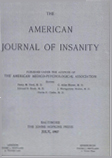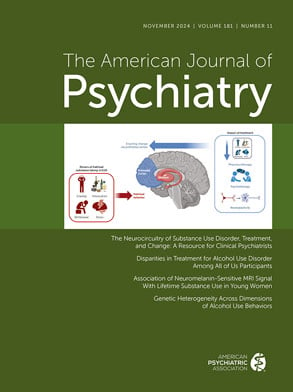Abstract
The study of the results in 50 cases of dementia præcox from six months to two and a half years after insulin shock therapy, with special reference to certain factors considered for their prognostic significance, suggests the following conclusions with relation to prognosis:
The dementia præcox patient who has the best outlook for recovery or improvement following insulin therapy is a male under the age of thirty who has had a comparatively adequate pre-psychotic personality, whose psychosis had an abrupt onset with a definite external precipitating cause. He will have been sick less than a year before the institution of treatment; he will have shown an excited catatonic state without evidence of what we have called deterioration, which is defined as consistent lack of attention to personal habits, bizarre behavior, disconnected thinking, and apathy.
Conversely, the patient not likely to benefit by hypoglycemic treatment will be a female over thirty who, with an inadequate personality, insidiously and without definite external precipitating cause, has developed over a period of more than a year before treatment a mixed form of dementia præcox with evidence of deterioration as defined above.
Obviously, various combinations of these prognostically good and bad factors will occur in different patients and their relative predominance will have an influence in determining the outcome.
In general, patients who will improve begin to show such improvement within a comparatively short time after the beginning of treatment, and on the other hand if improvement is not shown within a comparatively short time, long-continued treatment does not tend to bring about improvement.
Previous attacks with remission do not seem to have an influence on the general outcome.
It will be obvious that in this study of insulin-treated cases we have found of good prognostic significance factors that long before the institution of this form of treatment were recognized as having such significance. In other words, patients who will benefit by insulin treatment will have the same characteristics as those benefited formerly with other forms of treatment. This supports our conviction that insulin does not have a specific curative effect but that it may bring about changes that accelerate or facilitate improvement in those who have the constitutional capacity for such improvement or recovery.
It is our conviction that insulin therapy should be supplemented by psychotherapy, occupational therapy, and other psychiatric adjuncts suitably applied to give the patient the best opportunity for benefit.
The study of our series seems to indicate that with such extensive and intensive treatment, of a group of cases of dementia præcox such as constituted our material 16% may be expected to be recovered and about half be benefited six months to two and a half years after insulin treatment. The treatment of favorable cases, however, may result in an improvement rate of 90% at the end of the insulin treatment and of 80% at the end of six months to two and a half years after treatment. The results obtained in the group as a whole (16% recovered and a total of 36% benefited by treatment) may be compared with results reported by us two years ago in 500 cases of dementia præcox treated in the same hospital and with the same methods, with the exception of insulin, viz., 12% recovered, and 42% benefited by treatment.
For those who improved sufficiently to leave the hospital the median hospital residence after the beginning of treatment was four and a half months. It seems reasonable to expect, therefore, that if a case of dementia præcox receives insulin therapy supplemented by other psychiatric adjuncts soon after admission to the hospital, the hospital residence of such a patient may be appreciably shorter than if insulin therapy were not used.

